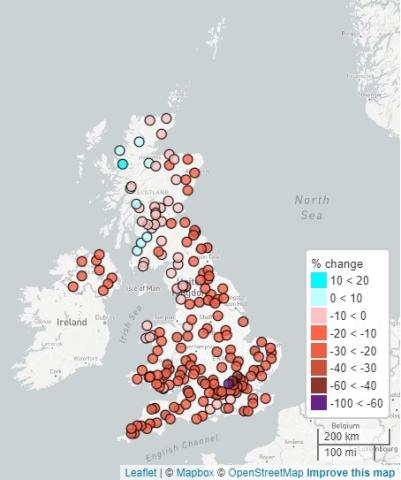We’re delighted to take part in this year’s European Geosciences Union General Assembly (EGU22) with contributions from our hydro-climate risks, water resources, soil and land use, and atmospheric chemistry and effects science areas. This year’s event (23-27 May 2022) is hybrid, taking place in-person in Vienna as well as online. Read on for more information on the science we’re sharing...
The EGU general assembly, one of the world’s largest science conferences, looks at all aspects of earth, planetary and space science. It’s also a place for networking and support, for example with resources and workshops for early career researchers or discussion on science communication.
This year, UKCEH scientists will be presenting details of innovative and applied research that addresses fundamental challenges such as reducing flood impacts, forecasting drought risk and understanding climate change impacts around the world.
We will spotlight recent work bringing significant improvements to rainfall and climate modelling and more accurate flood forecasting. Some of this work, delivered with international partners, has already been trialled with real-world outcomes that are helping to protect lives and property.
We’ll also discuss new good practice guidance for drought monitoring globally and details of the ROBIN project to create a global network of river basins suitable for detecting climate-driven trends.
Other UKCEH-led presentations will highlight research on the likely future of global wildfires, approaches to improving soil moisture modelling, and effects of natural flood management interventions on water quality. See links to all these presentations below. Elsewhere, partners including the University of Innsbruck, University of Exeter, University of Reading and the Met Office will provide updates on research involving UKCEH scientists.
Our senior hydrometric scientist Nick Everard is convening three sessions. Two of these bring hydrometry to the fore:
- Remote sensing for flood dynamics monitoring and flood mapping (Wed 25 May)
- Advances in river monitoring and modelling for a climate emergency (Thu 26 May)
And a third Great Debate session will examine the role of the earth science community in responding urgently to the extreme challenge of climate change:
